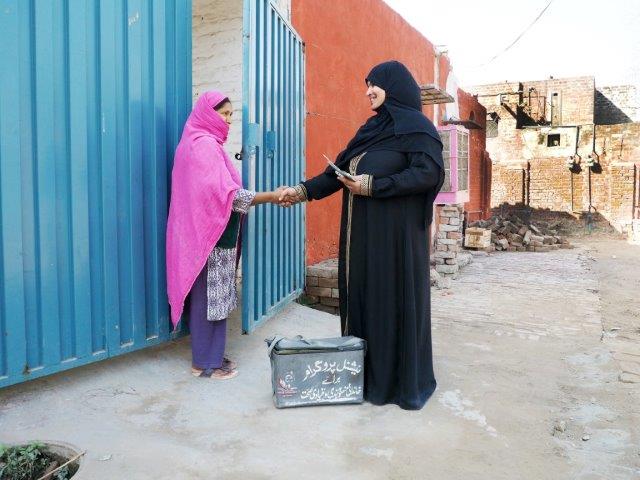Join a powerful, unprecedented alliance for better eye health for all.
Join IAPB-
Choose an alternate language here

A significant step towards health service integration in Pakistan was taken 25 years ago when a community health workers programme was launched – known as the “National Programme for Family Planning and Primary Health Care (FP&PHC)”[1]. It set out to fulfil the unmet health needs of people living in rural areas by providing essential primary health services at community level.[2] Since then it has grown and now has more than 110,000 Lady Health Workers covering the four provinces and two regions of the country who carry out monthly home visits. Each Lady Health Worker looks after about 1,000 people, addressing maternal, new-born and child care needs particularly for rural women. Nevertheless, until recently, primary eye care was not one of the areas they addressed.
INTEGRATION OF EYE HEALTH INTO PRIMARY EYE CARE
As a signatory to the Alma Ata Declaration of 1978[3], the Government of Pakistan is devoted for integration of health services using primary care approach. A phased-approach is used in Pakistan to the integration of primary eye care into primary health care that has gradually built the skills and knowledge of Lady Health Workers.
PHASE-1 INTEGRATION OF PEC INTO PHC CURRICULUM:
The first phase, 2008-2013, involved embedding skills and knowledge of primary eye care into the training curriculum. Sightsavers and other international organisations work closely to support the National Programme of Prevention and Control of Blindness (NPPCB) to:
PHASE-2 INTEGRATION IN PRACTICE:
In the second phase, Sightsavers and the Fred Hollows Foundation (FHF) are currently implementing a four year project (2016-2020) titled “New Vision of Eye Health in Pakistan’s Khyber Pakhtunkhwa Province”, supported by “Seeing is Believing”’ The project is implementing in four districts of the Khyber Pakhtunkhwa province of Pakistan and is making significant contributions to the integration of primary eye care into primary health care. The project’s contributions are:
The results of the project have paved the way for the creation of additional positions for optometrists to be deployed at provincial health facilities. The provincial Health Department has committed to funding 96 additional positions. This will be a significant step forward in the integration of primary eye care into primary health care.
Itfaq Khaliq Khan,
Senior Programme Officer,
Sightsavers
Khurram Shehzad,
Project Officer,
Fred Hollows Foundation
[1] Hafeez, A., Mohamud, B. K., Shiekh, M. R., Shah, S. A. I., & Jooma, R. (2011). Lady health workers programme in Pakistan: challenges, achievements and the way forward. JPMA: Journal of the Pakistan Medical Association, 61(3), 210.
[2] World Health Organization. (2008). Country Case Study-Pakistan’s Lady Health Worker Programme.
[3] https://www.who.int/publications/almaata_declaration_en.pdf